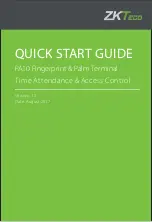
Installation and Operation Manual
X-TMF-MfS-MFC-eng
PN 541-C-061-AAG
November, 2008
MF Smart Series
18
Section 2: Installation
For (dis) assembly of the top cover and or housing refer to section 4.6.
Table 2-4: Dipswitch settings (not for Profibus
* not supported by Windows
Since Brooks MF-series Smart Mass Flow devices are capable of
communication immediately after start-up, you should set the correct baud
rates prior to power up. Any changes to the baud rate settings or the physical
layer selection made during operation will take effect immediately. The
communication I/O drivers are directly connected to the terminal strip on top of
the device.
The RS-232 is essentially a point-to-point connection, i.e. one host-computer
and one Smart Mass Flow device. Most IBM-compatible PCs are equipped
with one or more RS-232 ports (COM ports) as standard. The RS 232 usage
and definitions are very diverse. On the MF Smart Mass Flow device the
TXD signal is the output signal of the device and the RxD the input signal.
The communication terminals can be directly connected to a serial COM-
port of any PC. The other part of the terminals can be connected to Brooks
model 0152/0154 Microprocessor-based Readout and Control Electronics.
Or power supply only. This model provides the power supply for Smart Mass
Flow devices, as well as providing local readout and displaying the analogue
output signals. Figure 2-7 shows the interconnection diagram of the RS-232
configuration. The pin assignment on an IBM Compatible PC. This is standard
for RS-232.
Physical
Baud rate
Dipswitch block SW1
Layer
selection
Switch
Switch
Switch
Switch
selection
#1
#2
#3
#4
RS-232
Off / On
RS-485
1200
Off
Off
Off
2400
On
Off
Off
3600*
Off
On
Off
4800
On
On
Off
7200*
Off
Off
On
9600
On
Off
On
19200
Off
On
On
38400*
On
On
On
















































